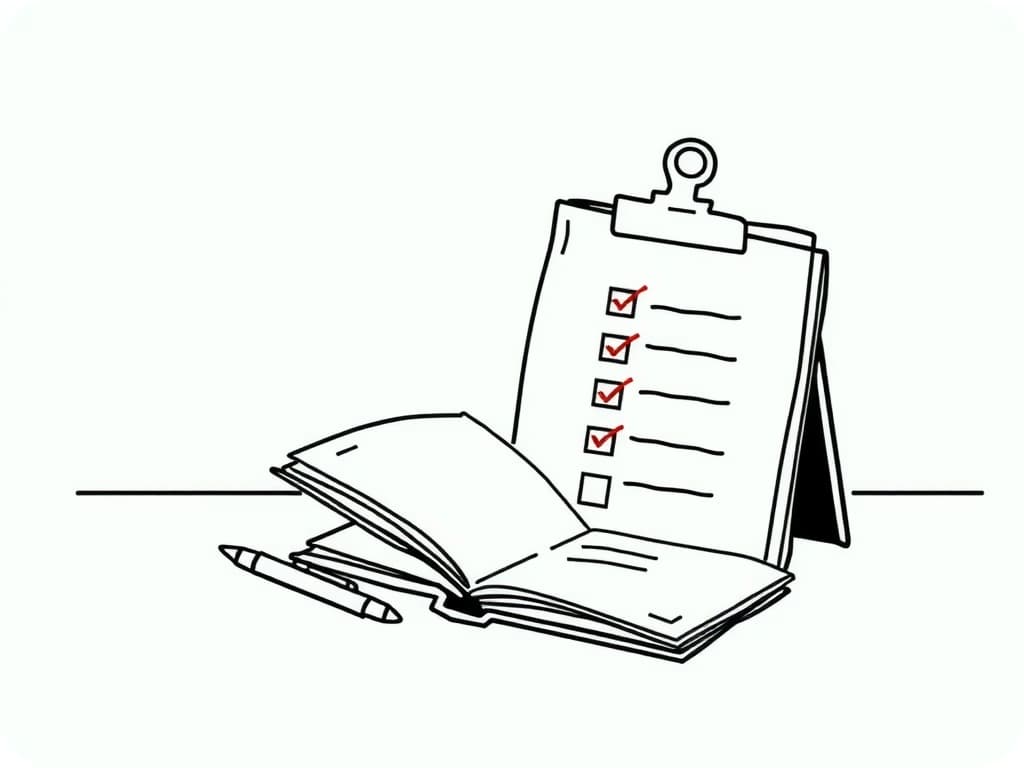RBT Documenting Non-Progress: Ethical Guide

Imagine you're in the middle of an ABA session, and the data isn't showing the gains everyone hoped for. The client's progress has stalled, or worse, it's dipping slightly. As an RBT, this moment tests your skills—not just in therapy, but in documentation. Accurate notes aren't busywork; they're the backbone of principled practice. According to the BACB RBT Ethics Code 2.0 (2022), RBTs must report data truthfully, including non-progress, to avoid misleading supervisors or families. This builds trust and ensures treatments evolve based on real insights.
In this guide, we'll explore RBT documenting non-progress, a key part of ethical reporting in ABA. You'll learn why flat data session notes matter, how to analyze trends, spot client variables per RBT E-01, and craft objective notes.
- Understand why reporting non-progress is an ethical duty.
- Learn to analyze and translate flat or declining data.
- Identify and document client variables (RBT E-01).
- Master objective language for clear session notes.
- Avoid common pitfalls like subjective and vague descriptions.
By the end, you'll have tools to turn challenging sessions into clear, professional records that support better outcomes.
Why Accurate Reporting is Ethical in ABA
Principled reporting in ABA goes beyond paperwork—it's about integrity and client welfare. The BACB RBT Ethics Code 2.0 (2022) states that RBTs must document behaviors and progress honestly, without exaggeration or omission. This means ethical reporting ABA includes flat or declining data. Hiding it could lead to ineffective plans or ethical violations.
Failing to report non-progress accurately might delay adjustments, like changing interventions. For instance, if a child's skill acquisition stalls, your notes alert the BCBA to review the program. The code emphasizes timely, objective records to promote truthful communication. According to the BACB (2022), RBTs avoid fabricating data, ensuring every note reflects what truly happened.
This practice protects clients and upholds your certification. Supervisors rely on your input for decisions, and insurers review notes for billing. Start by reviewing the ethics code annually—it's a quick way to stay aligned.
RBT Documenting Non-Progress: Data Analysis Strategies
As an RBT, you collect data daily, but analyzing flat or declining trends is where your role shines. Flat data means no change in behavior metrics, like a consistent 70% success rate over sessions. Declining data shows a drop, such as responses falling from 8 to 5 correct out of 10.
Begin by comparing current data to baselines and past sessions. Use simple tools like graphs—enter trials, successes, and errors to spot patterns. For example, if prompting levels increase without gains, note it. Write "Client required full physical prompt for 80% of trials, up from 50% last week." This translation helps supervisors see why progress stalled.
ABA practices recommend graphing data after each session to visualize trends. According to guidance from the BACB RBT Task List 2nd Edition (2022), RBTs generate objective session notes that describe occurrences accurately. The BACB RBT Task List highlights this in Section E. Avoid jumping to conclusions; just report the facts.
- Track key metrics: frequency (how often), duration (how long), and intensity (how severe).
- Note session conditions: Was the client tired or distracted?
- Flag trends early: If data is flat for three sessions, discuss with your supervisor.
For beginners, pair this with data entry skills. Check out our tips on data entry and graphing for accurate recording. Mastering this analysis improves your confidence and overall ABA progress tracking. It turns numbers into actionable stories, ensuring teams adapt quickly.
Observing and Documenting Variables: Mastering RBT E-01
Client progress doesn't happen in a vacuum. Variables like health or environment can influence outcomes. RBT Task List E-01 requires you to report factors that might affect the client. These include illness, medication changes, or family stress. These are "setting events" that indirectly impact behavior.
To observe them, start with pre-session checks. Ask parents about sleep, diet, or recent events. During sessions, watch for signs. If a child seems lethargic, note it alongside data. For documentation, integrate these objectively: "Client reported poor sleep the night before; responded correctly to 4/10 trials, down from 7/10 average."
Why does this matter for RBT client variables E-01? It provides context for flat data session notes, helping BCBAs adjust plans. The BACB (2022) stresses timely reporting to supervisors, preventing misinterpretation of data.
Common variables include:
- Health: Fever or allergies altering attention.
- Home life: Moves or sibling issues causing distraction.
- Medical: New meds affecting mood or energy.
- Environmental: Noise or unfamiliar settings.
Document without assuming causation—just observe and report. For deeper dives, see our client variables guide. This mastery ensures your notes are comprehensive and ethical.
The "What to Write" Guide: Objective, Observable Descriptions
Crafting flat data session notes requires focus on what's seen, heard, or measured—not opinions. Start with the basics: date, time, duration, and goals targeted. Then, describe behaviors and interventions factually.
Use the ABC framework: Antecedents (what happened before), Behavior (what occurred), and Consequences (what followed). For non-progress, write: "Antecedent: Verbal instruction given. Behavior: Client looked away for 5 seconds, no response after 10-second interval. Consequence: Model provided, client imitated after two trials." Include data: "Independently completed 3/10 tasks; latency averaged 15 seconds."
Contextual factors add value. Note variables per E-01, like "Session in quiet room; client arrived after nap." For measurable descriptions:
- Specify quantities: "Touched object 2 times" vs. "Touched a few times."
- Time it: "Tantrum lasted 3 minutes."
- Link to goals: "No progress on manding; used echoic prompt for all 5 opportunities."
Templates help beginners. The RBT Ethics Code 2.0 supports using structured formats to ensure objective and accurate documentation. Following these session note best practices makes RBT documenting non-progress straightforward and professional.
Practice with real sessions to refine. Our guide on ABA session notes for beginners breaks it down further for new RBTs.
What NOT to Write: Avoiding Subjective Language and Assumptions
Poor notes can undermine ethics and accuracy—especially with non-progress. Steer clear of subjective language that adds bias. Instead of "Client seemed frustrated," write "Client vocalized loudly and pushed materials." This keeps reports objective, as required by the BACB Ethics Code 2.0 (2022).
Avoid clinical assumptions, like "The child is regressing due to lack of motivation." That's for BCBAs to analyze. Stick to observables: "Responses decreased to 40% accuracy; no antecedents identified." Don't use vague terms. Skip "sort of improved" for "Increased from 2 to 3 correct responses."
Common pitfalls include:
- Emotional words: "Bad day" becomes "Client non-compliant for 60% of instructions."
- Opinions: "Easier session" turns into "Fewer prompts needed (from 8 to 5)."
- Overgeneralizing: "Always does this" changes to "Occurred in 3 of 5 trials today."
Ethical reporting ABA demands precision to maintain confidentiality and dignity. According to the RBT Ethics Code 2.0, notes are considered legal records. Inaccuracies risk ethical violations because they fail to be truthful and accurate.
If unsure, review with your supervisor. For more on ethics, explore our BCBA Ethical Documentation Best Practices—it applies to RBTs too. By dodging these errors, your flat data session notes stay reliable and supportive of client care.
Frequently Asked Questions
What are the main changes in the RBT Ethics Code 2.0 regarding documentation?
The RBT Ethics Code 2.0, effective in 2022, introduced significant updates. It now includes core principles and new standards on cultural responsiveness, humility, and conflicts of interest. For documentation, it continues to emphasize truthful reporting of all data, including non-progress, and requires prompt, accurate records to promote transparency.
How should RBTs document flat or declining data in session notes?
Focus on objective metrics like frequency and duration, using ABC details. Note "Behavior occurred 4 times, lasting 2 minutes each, despite intervention." Compare to prior sessions and include variables. ABA best practices stress linking data to goals for clear, compliant notes, as outlined in the RBT Task List.
What variables must RBTs report under E-01?
RBTs report factors like illness, medication changes, or home disruptions that could affect sessions. Per the BACB Task List (2022), notify supervisors timely and document objectively, such as "Client on new antibiotic; attention span reduced." This ensures holistic progress tracking.
How can RBTs avoid subjective language in notes?
Describe only observables. Use "Client walked away after instruction" instead of "Client was defiant." The BACB RBT Ethics Code 2.0 recommends using measurable, objective terms to maintain professionalism and avoid bias in ethical reporting.
What if a client's progress declines—how do I report it ethically?
Report facts without alarm. Include data trends and variables, then discuss with your supervisor. The Ethics Code 2.0 (BACB, 2022) requires honesty to guide adjustments, ensuring client welfare over positive appearances.
Why is graphing important for documenting non-progress?
Graphing visualizes trends, making flat data evident quickly. Enter session data accurately per Task List A-5 (BACB, 2022). This allows supervisors to spot patterns and modify plans effectively.
In wrapping up, documenting flat or declining progress as an RBT is crucial for ethical, effective ABA. By analyzing data objectively, noting client variables per E-01, and using clear language, you contribute to real improvements. Remember the BACB's call for honesty—it's what keeps treatments client-centered.
Next steps: Review your last notes against this guide, practice ABC entries in mock sessions, and consult your supervisor on a recent flat data case. Tools like our AI-powered templates at Praxis Notes can streamline this. With these habits, you'll excel in RBT documenting non-progress and build stronger outcomes for those you serve.
Popular in ABA Session Notes & Tools
- 1
RBT Supervision Documentation: 2025 BACB Guide & Templates
1,2469 min read - 2
Master ABA Medical Necessity Documentation: Avoid Denials
5719 min read - 3
Master ABA SOAP Notes: Guide for RBTs & BCBAs
5239 min read - 4
ABA Documentation Best Practices for RBTs: Essential Tips
4935 min read - 5
Guide to ABA Progress Reports for Insurance Reauthorization
4258 min read
Popular in ABA Session Notes & Tools
- 1
RBT Supervision Documentation: 2025 BACB Guide & Templates
1,2469 min read - 2
Master ABA Medical Necessity Documentation: Avoid Denials
5719 min read - 3
Master ABA SOAP Notes: Guide for RBTs & BCBAs
5239 min read - 4
ABA Documentation Best Practices for RBTs: Essential Tips
4935 min read - 5
Guide to ABA Progress Reports for Insurance Reauthorization
4258 min read
Related Resources
Explore more helpful content on similar topics

ABA Documentation Best Practices for RBTs: Essential Tips
Struggling with ABA documentation best practices for RBTs? This FAQ covers RBT session notes, ABC recording tips, ethical standards, and compliance with BACB, HIPAA, and insurance requirements to streamline your workflow and ensure accuracy.

ABA Session Notes for Beginners: Essential Guide
New to ABA? Master writing effective session notes as a beginner with our essential guide. Discover key components, best practices for objectivity, and BACB compliance tips to avoid common mistakes and ensure better outcomes. Start documenting like a pro today!

RBT Supervision Documentation: 2025 Compliance Guide
Master RBT supervision documentation with this step-by-step guide to compliant notes. Learn BACB requirements, key elements for supervision notes ABA, and prep for 2026 changes to stay certified and excel in ABA.